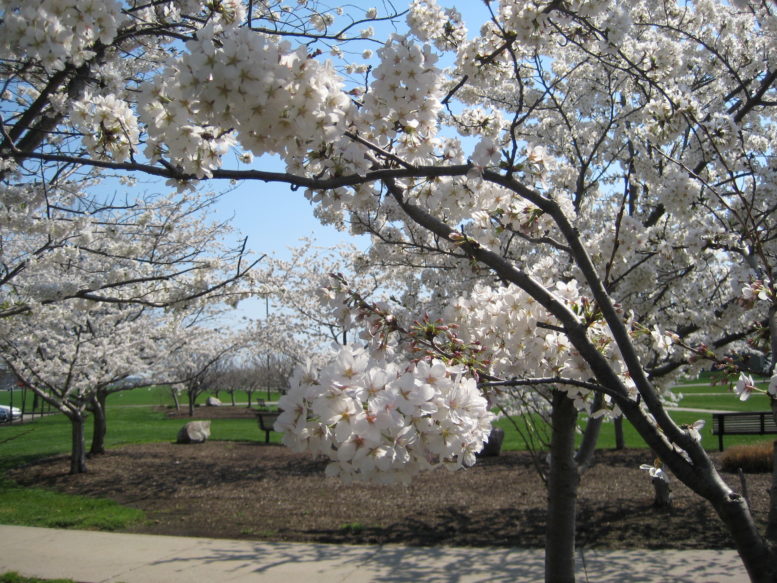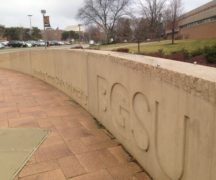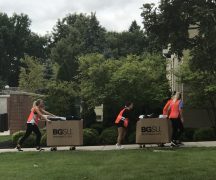Fifteen years after Japanese graduates of Bowling Green State University showed their appreciation for the school by planting cherry trees on campus, several are returning.
In fall, 2001, eight Japanese alumni came to campus for the planting of the trees. Graduate Masatoshi Emori had spearheaded the effort, inspired by the cherry trees in the nation’s capital. Fittingly then First Lady Hope Taft was on hand for the planting. Her husband’s great-grandfather was president when those trees took root in Washington D.C. as a sign of peace between Japan and the United States. Thanks to the Schedel Garden three of the BGSU trees were cuttings from the originals.
The next spring Akiko Jones, an instructor of Japanese, initiated the first Cherry Blossom Festival to celebrate the plantings.
Over the last 15 years, more trees have been planted and the Cherry Blossom Festival has grown. Now there are about 80. In Japan, the blossoming of the cherry trees is celebrated by outdoor hikes and picnics. Given the questionable weather in Northwest Ohio, the ceremony has been moved inside since its damp, very windy inaugural event in 2002.
Last year with the event staged in the Lenhart Grand Ballroom of the Bowen-Thompson Student Union, more than 800 attended. Jones expects to attract even more celebrants this year when the event is held Saturday, April 16, from 4 to 8 p.m. in the ballroom. Attendance at the event, a celebration of Japanese culture, has increased in every year, outgrowing several venues.
Jones credits the involvement of students with keeping the event going. When it started, she said, she never imagined it lasting this long. “I thought I’d retire” before now, said Jones, who has taught at BGSU for 33 years.
She started the Japanese Club to introduce students to the culture and customs of Japan beyond what could be covered in the language class.
“My students really work hard. It’s nice to see my students working together to make it really successful. Certainly I could not do it without the students,” she said.
That includes graduates coming back to help. Last year, one of the most popular activities was caricature artist Theo Rollock. Jones said he continued drawing until midnight. He graduated last year and now lives in Indiana, but is returning to campus to participate in the festival. Caricatures will be just one of more than a dozen activities including a sumo game, a chopsticks game, calligraphy and origami.
Two performances will be presented at 4:45 and 6 p.m. they will include Japanese traditional dance, the Taiko drum ensemble, a Japanese chorus and martial arts demonstration. Sushi and other delicacies will be served. Traditional Japanese tea will also be on the menu. (Jones will present the traditional tea ceremony a week later Friday April 22 at 7:30 p.m. in the tea room inside the Bryan Gallery in the Fine Arts Center.)
Jones said the festival may help bring students to the university. High school students are being bused in to attend, and seeing her students so involved in the event is good for recruitment.
The guests of honor will be two graduates from the 1960s, Emori and Takuo Imada, another original donor. Accompanying them will be Emori’s daughter Michiko Matsuki. She studied English in the summer at BGSU, Jones said, and is “a great promoter of BGSU.”
The other original donors were: Akira Koito, Shinsuke Takita, Ten Nobuhara, Junnosuke Koganemaru, Makiko Kosuge, Daijiro Ono, Steve Zirkel and Jimmy Bryant.





